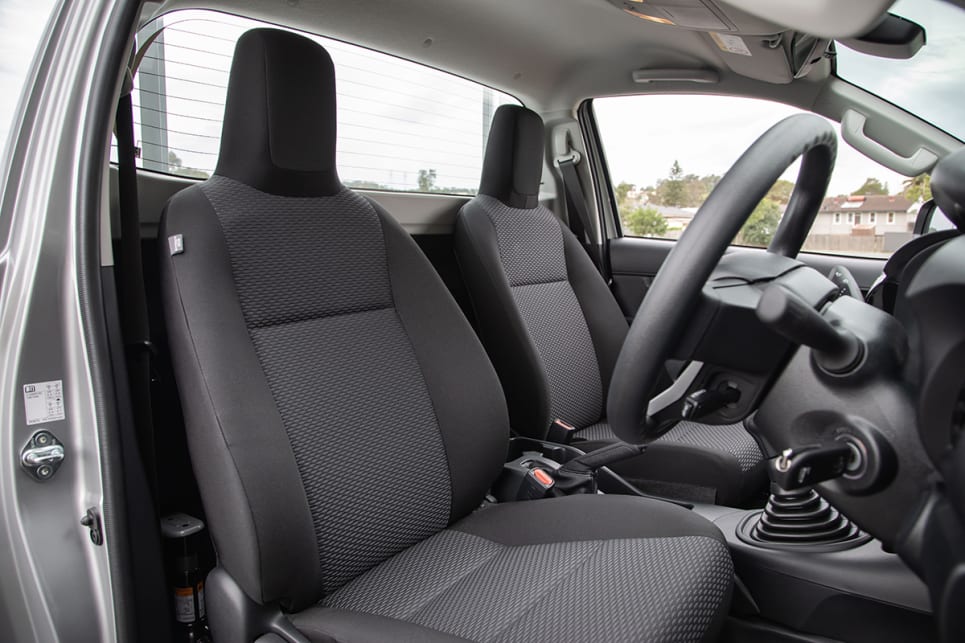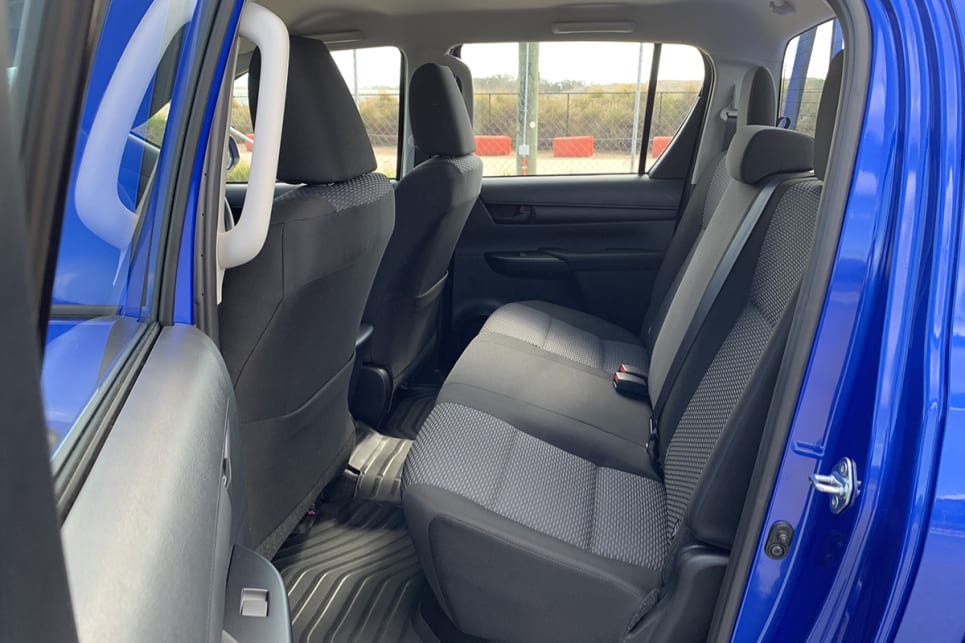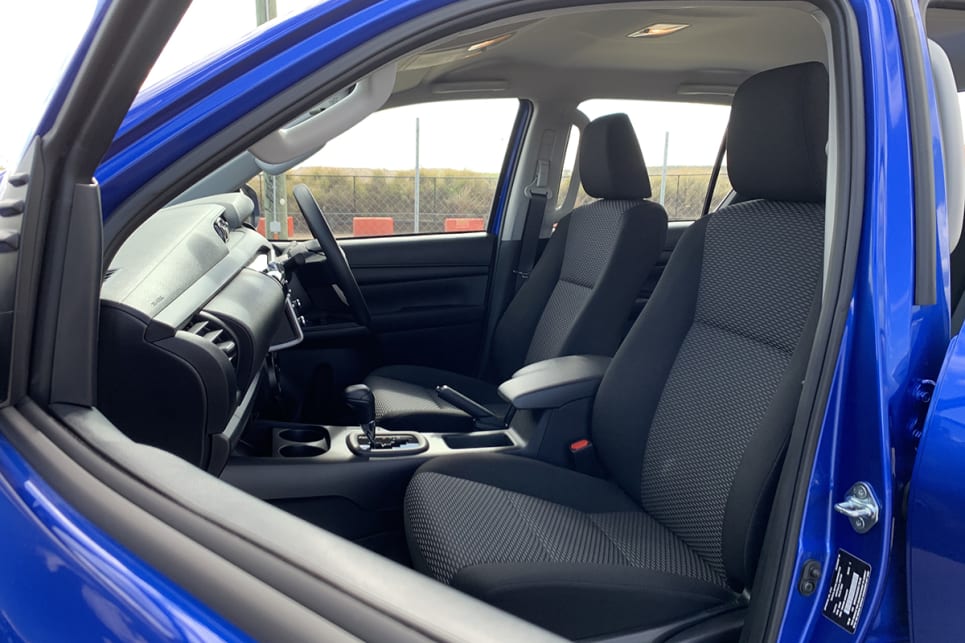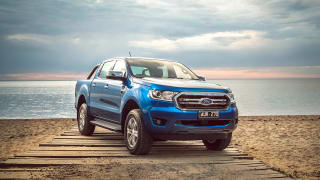You will find the Workmate badge on the most bodystyles of any HiLux in the line-up. You can get it in single cab-chassis, extra cab-chassis, extra cab ute, and dual cab-chassis and dual cab ute body styles.

And then there’s the choice of petrol or diesel, manual or automatic, and whether you want it in low-riding or high-riding (Hi-Rider, as Toyota calls it) 2WD/4x2/rear-wheel drive versions, or in a more hardcore 4WD (or 4x4).
The model mix for Workmate versions is as complex as it sounds, so here’s a neat table to make it a bit simpler! Just note, the price list you see below represents the cost of the ute before on-roads costs - that’s known as the MSRP or the RRP, and it’s not a drive-away price.
| Drivetrain | Body type | Engine and Transmission | List pricing (Before on-road costs) |
| 4x2 | Single cab-chassis- low rider | 2.7L petrol, five-speed manual | $23,590 |
| 2.7L petrol, six-speed auto | $25,590 | ||
| Single cab shassis Hi-Rider | 2.4L turbo diesel, six-speed manual | $28,830 | |
| Dual cab ute low-rider | 2.7L petrol, five-speed manual | $33,070 | |
| 2.7L petrol, six-speed auto | $35,070 | ||
| Dual cab ute Hi-Rider | 2.4L turbo diesel six-speed manual | $40,160 | |
| 2.4L turbo diesel six-speed auto | $42,160 | ||
| 4x4 | Single cab-chassis | 2.4L turbo diesel six-speed auto | $39,520 |
| Extra cab-chassis | 2.4L turbo diesel six-speed auto | $45,220 | |
| Dual cab-chassis | 2.4L turbo diesel six-speed auto | $47,290 | |
| Dual cab ute | 2.4L turbo diesel six-speed manual | $46,790 | |
| 2.4L turbo diesel six-speed auto | $48,790 |
You get the same general level of specification on all the Workmate models, with standard equipment incorporating standard steel wheels - black 16-inch diameter for 4x2 models, while 4x4 single cab versions get silver 17-inch rims, and there are black 17-inch wheels with all-terrain tyres on 4x4 extra cab and dual cab variants.
All Workmate models have standard auto halogen headlights, vinyl flooring and all-weather floor mats, cloth seat trim, a 4.2-inch digital display with digital speedo readout, and a new 8.0-inch touchscreen display with Apple CarPlay and Android Auto smartphone mirroring.
And while you get the choice of petrol or diesel, the latter models - across all trim lines - score a new variable-flow control power-steering pump. More on that in the driving section.

There are other accessories available from the Toyota parts catalogue as you’d expect, including: bull bar, tow bar, nudge bar, ladder rack, side steps, bonnet protector, tub liner, canopy, and more.
You might be curious about safety technology - and it's great to see Toyota doesn’t pick and choose between the variants as to which model gets what. There’s a decent array of safety technology fitted for the most part, and we’ll cover that off in the safety section below.
What about colours? Workmate models can be had in white (no cost), while the premium paint choices are silver, grey, black or blue (all $600).



























